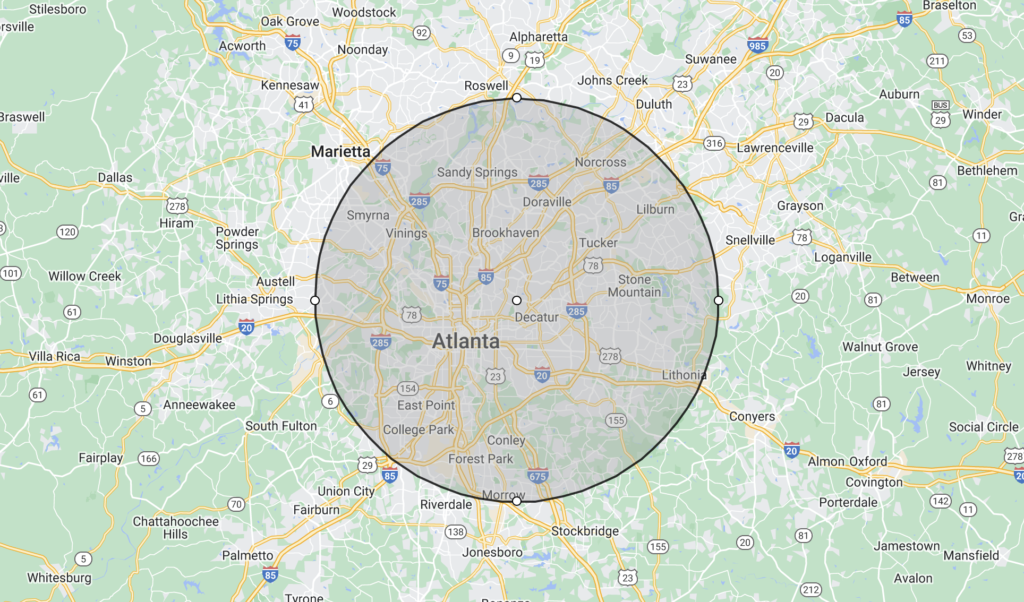The location analysis is one of the most important things you need to do correctly. If you open your office in a poor location, it’s gonna take your practice a lot longer to get busy.
We previously talked about the overhead, and the pro-forma, and we reviewed about how rent is part of the pro-forma.
Since rent is a big part of the overhead, I recommend doing the location analysis sooner than later so you can find a few rental locations to see what the true cost might be.
That means in order to do the pro-forma, you should also have a rough idea of what rent might be. And you won’t know the rent unless you know what area you want to open and what the market price is for that area.
I am not going to talk about the benefits of opening in a rural or urban location, but instead, I want to talk about tips and tricks at finding a good office location
#1 – The Non-Compete: The Key Mistake in Location Analysis
A lot of this seems elementary, but it’s always nice reviewing some very basic information.
The first thing I would do is to eliminate areas that you know 100% you will not or cannot open in. If you waste time exploring into the areas that you legally cannot practice, you are wasting your time.
If you have a non-compete, assume that it will be enforced. Do not get into trouble by setting up in the non-compete radius.
Pay attention to your contract terms. Many non-compete radius utilize air-miles, which is different from your typical google maps mileage.
This is a great website to see what your non-compete radius is:
https://www.mapdevelopers.com/draw-circle-tool.php#google_vignette
My other pro tip, take a look at the previous job contract carefully.
Some practices will enforce the non-compete from any location affiliated with the company.
If that’s the case, your non-compete radius is going to be much bigger than you realize.
#2 Stay Near Your Referral Base and Your OR
Next, with any practice location evaluation, you have to focus on the potential pipeline.
First, I would recommend evaluating where your potential referral sources are. If you have a few steady reliable referral sources already, I would recommend staying close to them if possible.
The closer you are to their office, the easier the referral pattern will be.
For ophthalmology, don’t just look at optometrists. Look also at PCPs, endocrinologists, and urgent care clinics.
I have found that those have been my most reliable resources.
Lastly, you also have to account for the potential competitions. That means, I would look up ophthalmologists by zip codes to see where the offices are.
The last thing to consider is to determine where you will be operating.
Find out where the ASCs are and which hospitals are open to independent surgeons.
If you don’t know where to begin, my pro tip is to talk to your local Alcon and Johnson and Johnson rep. They have the inside scoop on many things, and of course know which locations are accepting doctors. They are selling lenses to that surgical center after all.
#3 Stay Organized – Plot This Onto Google Maps
You can actually create a google maps to plot all of these on a map.
Next, I would plot all of these onto google maps.
Next, start breaking down the locations by neighborhoods and asking yourself, where do you want to set up your practice?
Remember, you want to love your new office location.
If you’re not 100% sure or have no preferences, I would recommend staying as close to freeways or major roads as possible.
By being off a major interstate or road, your effective reach is bigger. 15 minutes on the interstate covers a lot more mileage than 15 minutes on back roads.
With that, you have done an effective location analysis.
To find out how to find a good rental, keep on reading.
Thoughts? Concerns? Comment Below.




Pingback: 4 Key Tips For a Great Office Space and Lease - Solo Practice Doc
Pingback: The Timeline: How To Start a Medical Practice in 9 months